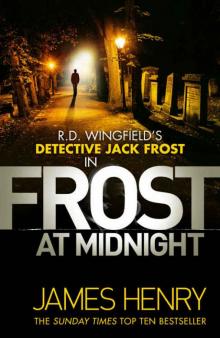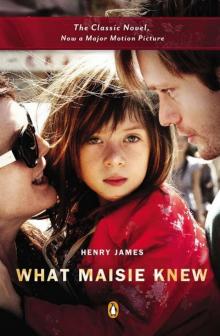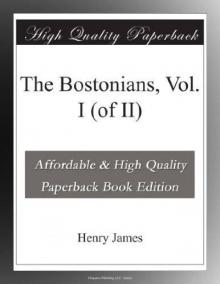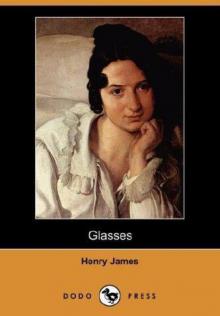- Home
- Henry James
Letters from the Palazzo Barbaro Page 4
Letters from the Palazzo Barbaro Read online
Page 4
34. In this scene, often discussed by critics, there is a “Titian’s daughter”, a Van Dyck where a lady wears a black silk dress (like Ariana). Miss Bart is Reynolds’s Mrs. Lloyd, although she had originally thought of being Tiepolo’s Cleopatra. As Wharton wrote: “To an unfurnished mind (tableaux vivants) remain … only a superior kind of wax-works; but to the responsive fancy they may give magic glimpses of the boundary world between fact and imagination.” (The House of Mirth, Penguin, p.133).
35. Ralph Curtis wrote to Mrs. Gardner, on April 13 (1894) on the back of a printed programme announcing Un inglese a Venezia. La vigilia di San Martino (An Englishman in Venice. The Vigil of San Martino), a commedietta (short play) in two acts by K. de KB. (Programme at the Isabella Stewart Gardner Museum). Incredible as it may seem, Mrs. Bronson had in fact learnt the Venetian dialect well enough to write plays. The children who played in Mrs. Bronson’s performances came from a school she had organized for the local inhabitants, whose poverty had upset her.
36. Daniel was thus given the nickname of “Pinchnose Curtis”. This episode is part of Boston’s oral history, but it is also recorded in L. Tharp, op.cit., p.101.
The entrance, Palazzo Barbaro
LETTERS BY HENRY JAMES
I
To William James1
September 25th [1869]
(Edel I)
Venice, Hotel Barbesi2
My dear Bill –
I wrote to father as soon as I arrived here and mentioned my intention of sending you some copious account of my impressions of Venice. I have since then written to J. La Farge3 (briefly) and to Howells4 and worked off in some degree the éblouissement of the first few days. I have a vague idea that I may write some notes for the Atlantic or the Nation; but at the risk of knocking the bottom out of them, I feel that I must despatch you a few choice remarks—although I’m too tired to plunge deeply into things. […] I have now been here nearly two weeks and have experienced that inevitable reconciliation to things which six months of Europe cause to operate so rapidly and smoothly, no matter what the strangeness of things may be. A little stare—a little thrill—a little curiosity, and then all is over. You subside into the plodding blasé, homesick “doer” of cities. Venice is magnificently fair and quite, to my perception, the Venice of Romance and fancy. Taine,5 I remember, somewhere speaks of “Venice and Oxford—the two most picturesque cities in Europe.” I personally prefer Oxford; it told me deeper and richer things than any I have learned here. It’s as if I had been born in Boston: I can’t for my life frankly surrender myself to the Genius of Italy, or the Spirit of the South—or whatever one may call the confounded thing; but I nevertheless feel it in all my pulses. If I could only write as I might talk I should have no end of things to tell you about my last days in Switzerland and especially my descent of the Alps—that mighty summer’s day upon the Simplon when I communed with immensity and sniffed Italy from afar. This Italian tone of things which I then detected, lies richly on my soul and gathers increasing weight, but it lies as a cold and foreign mass—never to be absorbed and appropriated. The meaning of this superb image is that I feel I shall never look at Italy—at Venice, for instance—but from without; whereas it seemed to me at Oxford and in England generally that I was breathing the air of home. Ruskin6 recommends the traveller to frequent and linger in a certain glorious room at the Ducal Palace, where P. Veronese revels on the ceilings and Tintoret rages7 on the walls, because he “nowhere else will enter so deeply into the heart of Venice.” But I feel as if I might sit there forever (as I sat there a long time this morning) and only feel more and more my inexorable Yankeehood. As a puling pining Yankee, however, I enjoy things deeply. What you will care most to hear about is the painters; so I shall not feel bound to inflict upon you any tall writing about the canals and palaces; the more especially as with regard to them, photographs are worth something; but with regard to the pictures comparatively nothing—rapport à la couleur—which is quite half of Venetian painting. The first thing that strikes you, when you come to sum up, after you’ve been to the Ducal Palace and the Academy, is that you have not half so much been seeing paintings as painters. The accumulated mass of works by a few men drives each man home to your senses with extraordinary force. This is especially the case with the greatest of them all—Tintoretto—so much so that he ends by becoming an immense perpetual moral presence, brooding over the scene and worrying the mind into some species of response and acknowledgement. I have had more eyes and more thoughts for him than for anything else in Venice; and in future, I fancy, when I recall the place, I shall remember chiefly the full-streaming, dazzling light of the heavens, and Tintoretto’s dark range of color. Ruskin truly says that it is well to devote yourself here solely to three men—P. Veronese, Tintoretto and J. Bellini;8 inasmuch as you can see sufficient specimens of the rest (including Italian) amply elsewhere but must come here for even a notion of these. This is true of the three, but especially of Tintoretto—whom I finally see there is nothing for me to do but to admit (and have done with it) to be the biggest genius (as far as I yet know) who ever wielded a brush. Once do this, and you can make your abatements; but if Shakespeare is the greatest of poets Tintoretto is assuredly the greatest of painters. He belongs to the same family and produces very much the same effect. He seems to me to have seen into painting to a distance unsuspected by any of his fellows: I don’t mean into its sentimental virtues or didactic properties but into its simple pictorial capacity. Imagine Doré9 a thousand times refined in quality and then as many times multiplied in quantity and you may have a sort of notion of him. But you must see him here at work like a great wholesale decorator to form an idea of his boundless invention and his passionate energy and the extraordinary possibilities of color—for he begins by striking you as the poorest and ends by impressing you as the greatest of colorists. Beside him the others are the simplest fellows in the world. For the present I give up Titian altogether. He is not adequately represented here. His Assumption10 strikes me as a magnificent second-rate picture; his presentation of the Virgin is utterly killed by another of Tintoretto’s. I fancy you must see him in England, Madrid etc. P. Veronese is really great, in a very simple fashion. He seems to have had in his head a perfect realization of a world in which all things were interfused with a sort of silvery splendor delicious to look upon. He is thoroughly undramatic and “impersonal”. A splendid scene in the concrete was enough for him and when he paints anything of a story the whole action seems to rest suspended in order to look handsome and be painted. If I weren’t a base Anglo-Saxon and a coward slave, I should ask nothing better than his Rape of Europa in the Doge’s Palace where a great rosy blonde, gorgeous with brocade and pearls and bouncing with salubrity and a great mellow splendor of sea and sky and nymphs and flowers do their best to demoralize the world into a herd of Théophile Gautiers.11 The great beauty of P. Veronese is the perfect unity and placidity of his talent. There is not a whit of struggle, nor fever, nor longing for the unattainable; simply a glorious sense of the look of things out of doors—of heads and columns against the sky, of the lustre of satin and of the beauty of looking up and seeing things lifted into the light above you. He is here chiefly found in the ceilings, where he is perfectly at home, and delights to force you to break your back to look at him—and wonder what sort of a back he must have had. John Bellini, a painter of whom I had no conception—one of the early Venetians—is equally great and simple in his own far different way. He has everything on a great scale—knowledge color and expression. He is the first “religious” painter I have yet seen who has made me understand that there can be—or that there once was at least, such a thing as pure religious art. I always fancied it more or less an illusion of the critics. But Bellini puts me to the blush. How to define his “religious” quality I know not; but he really makes you believe that his genius was essentially consecrated to heaven and that each of his pictures was a genuine act of worship. This is the more interesting because his piety
prevails not the least against his science and his pictorial energy. There is not a ray in his works of debility or vagueness of conception. In vigor breadth and richness he is a thorough Venetian. His best pictures here possess an extraordinary perfection. Everything is equal—the full deep beauty of the expression—the masterly—the more than masterly firmness and purity of the drawing—and the undimmed, unfathomed lucidity and richness of the coloring. And then over it all the sort of pious deference has passed and hushed and smoothed and polished it till the effect is one of unspeakable purity. He has hardly more than one subject—the Virgin and Child, alone, or enthroned and attended with Saints and Cherubs; but you will be slow to tire of him, for long after you’ve had enough of his piety there is food for delight in the secret marvels of his handling. It gives me a strong sense of the vastness and strangeness of art, to compare these two men, Bellini and Tintoretto—to reflect upon their almost equal greatness and yet their immense dissimilarity, so that the great merit of each seems to have been that he possesses just these qualities the absence of which, apparently, ensures his high place to the other. But to return to Tintoretto. I’d give a great deal to be able to fling down a dozen of his pictures into prose of corresponding force and color. I strongly urge you to look up in vol. 3 of Ruskin’s Stones (last appendix) a number of magnificent descriptive pages touching his principal pictures. (The whole appendix by the way, with all its exasperating points is invaluable to the visitor here and I have profited much by it.) I should be sadly at a loss to make you understand in what his great power consists—the more especially as he offers a hundred superficial points of repulsion to the well-regulated mind. In a certain occasional imbecility and crudity and imperfection of drawing Delacroix is nothing to him. And then you see him at a vast disadvantage inasmuch as with hardly an exception his pictures are atrociously hung and lighted. When you reflect that he was willing to go on covering canvas to be hidden out of sight or falsely shown, you get some idea of the prodigality of his genius. Most of his pictures are immense and swarming with figures; all have suffered grievously from abuse and neglect. But there are all sorts; you can never feel that you have seen the last; and each new one throws a new light on his resources. Besides this, they are extremely unequal and it would be an easy task I fancy to collect a dozen pieces which would conclusively establish him an unmitigated bore. His especial greatness, I should be tempted to say lies in the fact that more than any painter yet, he habitually conceived his subject as an actual scene which could not possibly have happened otherwise; not as a mere subject and fiction—but as a great fragment wrenched out of life and history, with all its natural details clinging to it and testifying to its reality. You seem not only to look at his pictures, but into them,—and this in spite of his not hesitating to open the clouds and shower down the deities and mix up heaven and earth as freely as his purpose demands. His Miracle of St. Mark12 is a tremendous work, with life enough in it to animate a planet. But they can all paint a crowd, and this is as much Venetian as individual. A better specimen of his peculiar power is a simple Adam and Eve, in the same room or a Cain and Abel, its mate, both atrociously hung—away aloft in the air. Adam sits on a bank with his back to you; Eve facing you, with one arm wound round a tree leans forward and holds out the apple. The composition is so simple that it hardly exists and yet the painting is so rich and expressive that it seems as if the natural, the real, could go no further—unless indeed in the other, where Cain assaults Abel with an intent to kill more murderous and tragical than words can describe it. One of his works that has much struck me is a large Annunciation, immensely characteristic of this unlikeness to other painters. To the right sits the Virgin, starting back from her angelic visitant with magnificent surprise and terror. The Angel swoops down into the picture, leading a swarm of cherubs, not as in most cases where the subject is treated, as if he had come to pay her a pretty compliment but with a fury characteristic of his tremendous message. The greatest of all though—the greatest picture it seemed to me as I looked at it I ever saw—is a Crucifixion in a small church.13 (He has treated the same subject elsewhere on a stupendous scale; but on the whole I prefer this.) Here, as usual, all is original and unconventional. Ruskin describes it far better than I can do.
Monday 26th. Having written so much last evening, I succumbed to slumber, and this evening I hardly feel like resuming the feeble thread of my discourse. I have been abroad all day bidding farewell to Venice, for I think of leaving tomorrow or next day. I began the day with several churches and saw two new and magnificent Tintorets and a beautiful Titian. Then I paid a farewell visit to the Academy, which I have got pretty well by heart—and where I saw Mr. and Mrs. Bronson14 of Newport who knew me not—the latter very haggard and pale. After which I took a gondola over to the Lido to look my last at the Adriatic. It was a glorious afternoon and I wandered for nearly two hours by the side of the murmuring sea. I was more than ever struck with the resemblance of Venice—especially that part of it—to Newport. The same atmosphere, the same luminosity. Standing looking out at the Adriatic with the low-lying linked islands on the horizon was just like looking out to sea from one of the Newport beaches, with Narragansett afar. I have seen the Atlantic as blue and smooth and musical—almost! If words were not so stupid and colorless, fratello mio15, and sentences so interminable and chirography so difficult, I should like to treat you to a dozen pages more about this watery paradise. Read Théophile Gautier’s Italia; it’s chiefly about Venice. I’m curious to know how this enchanted fortnight will strike me, in memory ten years hence—for altho’ I’ve got absurdly used to it all, yet there is a palpable sub-current of deep delight. Gondolas spoil you for a return to common life. To begin with, in themselves they afford the perfection of indolent pleasure. The seat is so soft and deep and slumberous and the motion so mild elastic and unbroken that even if they bore you through miles of stupid darkness you’d think it the most delectable fun. But when they lift you thro’ this rosy air, along these liquid paths, beneath the balconies of palaces as lovely in design and fancy as they are pathetic in their loneliness and decay—you may imagine that it’s better than walking down Broadway. I should never have forgiven myself had I come to Venice any later in the season. The mosquitoes are perfectly infernal—and you can’t say more for Venice than that you are willing, at this moment, for the sake of the days she bestows to endure the nights she inflicts. But, bating this, all else is in perfection—the weather, the temperature and the aspect of the canals. The Venetian population, on the water, is immensely picturesque. In the narrow streets, the people are far too squalid and offensive to the nostrils, but with a good breadth of canals to set them off and a heavy stream of sunshine to light them up as they go pushing and paddling and screaming—bare-chested, bare-legged, magnificently tanned and muscular—the men at least are a very effective lot. Besides lolling in my gondola I have spent a good deal of time in poking thro’ the alleys which serve as streets and staring about in the Campos—the little squares formed about every church—some of them most sunnily desolate, the most grass-grown, the most cheerfully sad little reliquaries of a splendid past that you can imagine. Every one knows that the Grand Canal is a wonder; but really to feel in your heart the ancient wealth of Venice, you must have frequented these canalettos and campos and seen the number and splendor of the palaces that stand rotting and crumbling and abandoned to paupers.—If I might talk of these things I would talk of more and tell you in glowing accents how beautiful a thing this month in Italy has been and how my brain swarms with pictures and my bosom aches with memories. I should like in some neat formula to give you the Italian feeling—and tell you just how it is that one is conscious here of the aesthetic presence of the past. But you’ll learn one day for yourself. You’ll go to that admirable Verona and get your fill of it.—I wanted not only to say a hundred things about Tintoretto which I’ve left unsaid (indeed I’ve said nothing) but to gossip a bit about the other painters. Whether it is that the three great
ones I’ve mentioned practically include all the rest or not, I can’t say; but (with the exception of two or three primitive members of the school, especially Carpaccio, who seemed to have learned laboriously for themselves,) there flows from the great mass of the secondary fellows no very powerful emanation of genius. Immense aptitude and capital teaching—vigorous talent, in fine—seem to be the amount of the matter. In them the school trenches on vulgarity. Bonifazio, Caliari, the two Palmas, Paris Bordone etc. have all an immense amount of ability, (often of a very exquisite kind) to a comparatively small amount of originality. Nevertheless I’m very willing to believe—in fact I’m quite sure—that seen in other places, in detached examples each of them would impress and charm you very much as their betters do here. All of them know endless things about colour: in this they are indeed exquisite. Bonifazio is a somewhat coarser Titian—a perfect Monarch of the mellow and glowing and richly darksome. Paris Bordone equals him, on a slightly different range. C. Caliari (son of P. Veronese) is a very handsome imitation of his father—and if the latter’s works were destroyed, we’d vote him a great master. But what has fascinated me most here after Tintoretto and Co. are the two great buildings—the Ducal Palace and St. Mark’s church. You have a general notion of what they amount to; it’s all you can have, until you see them. St. Marks, within, is a great hoary shadowy tabernacle of mosaic and marble, entrancing you with its remoteness, its picturesqueness and its chiaroscuro—an immense piece of Romanticism. But the Ducal Palace is as pure and perpetual as the façade of the Parthenon—and I think of all things in Venice, it’s the one I should have been gladdest to achieve—the one most worthy of civic affection and gratitude. When you’re heated and weary to death with Tintoretto and his feverish Bible Stories, you can come out on the great Piazzetta, between the marble columns, and grow comparatively cool and comfortable with gazing on this work of art which has so little to do with persons! But I too am weary and hot—tho’ I expect to find on my couch but little of coolness or comfort. I have the delightful choices of sleeping with my window open and being devoured—maddened, poisoned—or closing it, in spite of the heat, and being stifled! (I have made no allusion to the contents of Mother’s letter, which I none the less prize. … But I must say good-night. I mean to write you again in a few days—Not about painters. À toi

 The American
The American The Wings of the Dove, Volume 1 of 2
The Wings of the Dove, Volume 1 of 2 Frost at Midnight
Frost at Midnight Morning Frost
Morning Frost The Portrait of a Lady — Volume 1
The Portrait of a Lady — Volume 1 Fatal Frost
Fatal Frost The Europeans
The Europeans The New York Stories of Henry James
The New York Stories of Henry James Great Short Novels of Henry James
Great Short Novels of Henry James Washington Square
Washington Square The Portrait of a Lady — Volume 2
The Portrait of a Lady — Volume 2 The Ambassadors
The Ambassadors The Wings of the Dove
The Wings of the Dove The Princess Casamassima (Classics)
The Princess Casamassima (Classics) The Coxon Fund
The Coxon Fund First Frost
First Frost Henry James
Henry James The Daily Henry James
The Daily Henry James Travels With Henry James
Travels With Henry James The Reverberator: A Novel
The Reverberator: A Novel What Maisie Knew (Henry James Collection)
What Maisie Knew (Henry James Collection) The Outcry
The Outcry The Marriages
The Marriages The Wings of the Dove, Volume 2
The Wings of the Dove, Volume 2 The Bostonians, Vol. I
The Bostonians, Vol. I The Outcry: -1911
The Outcry: -1911 The Complete Works of Henry James
The Complete Works of Henry James Letters from the Palazzo Barbaro
Letters from the Palazzo Barbaro The Pupil
The Pupil The Bostonians, Vol. II
The Bostonians, Vol. II Pandora
Pandora Glasses
Glasses The Princess Casamassima
The Princess Casamassima What Maisie Knew
What Maisie Knew The Reverberator
The Reverberator The Golden Bowl - Complete
The Golden Bowl - Complete Confidence
Confidence Wings of the Dove (Barnes & Noble Classics Series)
Wings of the Dove (Barnes & Noble Classics Series) The Spoils of Poynton
The Spoils of Poynton